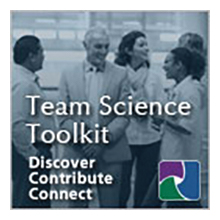Paper Session: Of Users, Journeys, and Cases: Methods and Measures for Improving the Study and Understanding of SciTS
Wednesday, August 3, 2022
11:30 PM - 12:45 PM ET
|
Scientific Collaboration Journey Maps: A tool for forming, leading, and evaluating scientific collaborations
Mehmet Aydeniz
Abstract: Scientists engage in scientific collaboration across disciplinary, institutional and national borders. In order for scientific collaboration to be successful, this journey from start to finish requires intentional planning, management and evaluation. Yet, we do not know how this journey looks like unless we have experienced it because most scientists do not receive formal training on forming and managing scientific collaborations. This presentation focuses on development of a Collaboration Journey Map to assist with collaboration teams to successfully navigate and manage scientific collaborations interdisciplinary, inter-institutional collaborations from start to finish. The presenters will present a collaboration journey map tool that focuses on various dimensions of scientific collaborations, demystify the aspects of the collaboration management tool for the attendees and engage them in hands-on activities related to the applications of this collaboration journey map tool for their own contexts.
|
|
Improving Team Science and the Science of Team Science Using User Experience Research and Design
Stephanie Vasko
Abstract: Throughout the establishment and rise of team science (TS) and the science of team science (SciTS), scholars and practitioners have created tools and interventions for teams, designed and delivered workshops for teams, published articles, and created resources intended for a wider team science community.InSciTS, the professional organization for science of team science researchers and practitioners, states in their mission that they are "…a conduit to ensure that empirical findings about team science are accessible and useful for effective collaborative practice and policy, bridging both science and praxis." The methods and strategies for ensuring accessibility and usefulness are not yet developed or elaborated upon in this mission statement. Additionally, TS and SciTS work is often geared at many audiences including, but not limited to fellow practitioners and/or researchers, funding agencies, universities and colleges, and members of multi/inter/transdisciplinary teams. This represents a crucial moment in the growth for TS/SciTS: the ability to design with instead of create for across our outputs and communities. In this talk, I will urge the SciTS community to consider a user-based approach to the development and delivery of trainings, tools, and interventions that takes into account the users' needs, especially for products and interventions designed for teams. This will require some changes to product creation, including iterative user interviews and usability testing, focused on understanding clients and incorporating their feedback into research and practice.I will emphasize the importance of user experience research (UXR) and user experience design (UXD) for team science trainings, interventions, and research projects. Using a case study-based approach, I will underscore the ways that UXR and UXD are important for TS and SciTS research and how these approaches and roles can be integrated into workflows and research teams. Finally, I will touch on the ways the UXD/UXR and TS/SciTS can work together to create mutual buy-in for each of these areas across corporate, non-profit, educational, and governmental spaces.
|
|
Investigating the Process of Integration in an Interdisciplinary Academic STEM Team using a Qualitative Case Study Design
Colleen Cuddy
Abstract: Team effectiveness relies on specific team processes such as integration, communication, and cohesion. Embarking on qualitative research to study team processes requires developing a thoughtful methodological approach to ensure that the researcher captures the team perspective and makes assertations about team processes rather than solely representing individual perspectives or processes. Adding to the problem of researching team processes is the view that certain group research methods are less valued or too challenging to perform in academic settings. For example, focus groups and group card sorting activities are frequently employed in practitioner research and user experience studies but are sometimes considered inappropriate for academic studies. Anthropologic methods for group observation can be time-consuming and resource intensive. In an effort to leverage individual team member's insights as well as develop a nuanced understanding of team practices, a qualitative case study method that employed critical incident technique followed by a group reflection session and document analysis was designed and utilized to examine the process of integration in an academic interdisciplinary STEM research team. A review of the literature leading to the author's decision to adopt the study design will be presented, followed by an overview of the study findings and an assessment of the design's utility in gathering relevant data.
|
|

